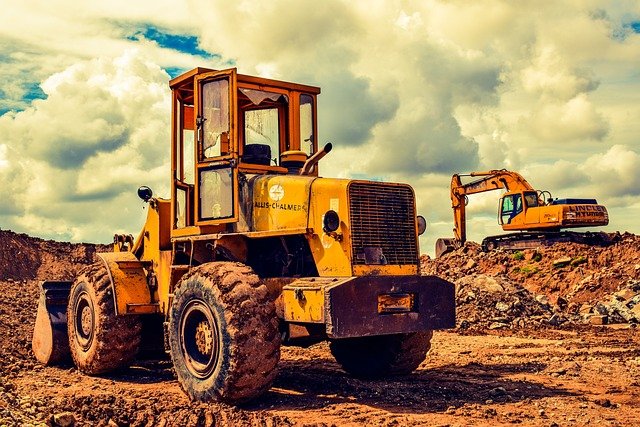Heavy Equipment for Construction and Earthmoving Projects
Explore the essentials of military bulldozer equipment and its role in field operations. This guide provides a clear overview of the types, functions, and practical uses of these machines, helping readers understand their capabilities and applications without exaggeration.

Understanding Heavy Equipment Design and Functionality
Bulldozers represent one of the most recognizable pieces of heavy construction equipment, featuring a powerful diesel engine mounted on continuous tracks with a large curved blade at the front. The blade design allows operators to push, lift, and move substantial amounts of material efficiently. Modern bulldozers incorporate advanced hydraulic systems that provide precise blade control, enabling operators to perform delicate grading work alongside heavy-duty earthmoving tasks.
The tracked undercarriage system distributes the machine’s weight evenly across soft or uneven terrain, providing superior traction compared to wheeled vehicles. This design feature makes bulldozers particularly effective in muddy conditions, steep slopes, and loose soil environments where other equipment might struggle. Engine sizes typically range from 100 to over 800 horsepower, with larger models capable of moving hundreds of cubic yards of material per hour.
Construction Applications and Site Preparation
Construction projects rely heavily on bulldozers for initial site preparation and ongoing earthwork operations. These machines excel at clearing vegetation, removing topsoil, and creating level building platforms for structures. Road construction projects utilize bulldozers for cutting roadbeds, creating embankments, and shaping drainage ditches. The ability to work in confined spaces while maintaining powerful pushing force makes bulldozers ideal for urban construction projects.
Demolition work represents another significant application area, where bulldozers equipped with specialized blades can safely push down structures and clear debris. Many construction companies prefer bulldozers for backfilling operations around foundations, utility trenches, and underground installations. The precise blade control allows operators to achieve specific grades and slopes required for proper drainage and structural integrity.
Mining and Resource Extraction Operations
Mining operations depend on bulldozers for overburden removal, haul road maintenance, and material handling throughout extraction sites. Open-pit mining requires continuous earthmoving to access mineral deposits, with large bulldozers moving millions of tons of material annually. Coal mining operations use specialized bulldozers designed to handle the unique challenges of coal extraction, including dust control and material segregation.
Quarry operations benefit from bulldozer capabilities in stockpile management, where precise material placement ensures efficient loading and transportation. The machines also maintain access roads within mining sites, pushing aside loose rock and debris that could impede heavy truck traffic. Environmental restoration projects following mining completion often rely on bulldozers to reshape terrain and prepare sites for revegetation.
Cost Analysis and Equipment Investment
Bulldozer acquisition costs vary significantly based on size, features, and manufacturer specifications. Small to medium bulldozers suitable for residential construction typically range from $200,000 to $500,000, while large mining-class machines can exceed $1.5 million. Operating costs include fuel consumption, maintenance expenses, and operator wages, which collectively can reach $150-300 per operating hour depending on machine size and local conditions.
| Equipment Size | Manufacturer | Cost Estimation | Typical Applications |
|---|---|---|---|
| Small (100-200 HP) | Caterpillar D6 | $300K - $450K | Residential construction, landscaping |
| Medium (200-400 HP) | Komatsu D65 | $450K - $700K | Commercial construction, road work |
| Large (400-600 HP) | John Deere 850K | $600K - $900K | Mining, large excavation projects |
| Extra Large (600+ HP) | Caterpillar D11 | $1.2M - $1.8M | Open-pit mining, major earthworks |
Prices, rates, or cost estimates mentioned in this article are based on the latest available information but may change over time. Independent research is advised before making financial decisions.
Technological Advances and Modern Features
Contemporary bulldozers incorporate sophisticated technology systems that enhance productivity and operator safety. GPS-guided blade control systems automatically maintain precise grades and elevations, reducing the need for manual surveying and improving accuracy. Automated transmission systems optimize engine performance while reducing fuel consumption and operator fatigue during long working shifts.
Cab design has evolved significantly, with climate-controlled environments, ergonomic controls, and advanced visibility systems that include backup cameras and proximity sensors. Many modern bulldozers feature telematics systems that monitor machine performance, track maintenance schedules, and provide real-time operational data to fleet managers. These technological improvements have increased productivity while reducing operating costs and environmental impact.
Maintenance Requirements and Operational Considerations
Proper bulldozer maintenance requires regular attention to track systems, hydraulic components, and engine performance to ensure reliable operation and extend equipment life. Daily maintenance tasks include checking fluid levels, inspecting tracks for wear, and cleaning air filtration systems. Scheduled maintenance intervals typically occur every 250-500 operating hours, involving comprehensive inspections and component replacements.
Operator training represents a critical factor in maximizing bulldozer productivity and safety. Skilled operators understand how to optimize blade angles, select appropriate ground speeds, and recognize terrain conditions that require modified techniques. Many equipment manufacturers offer comprehensive training programs that cover both basic operation and advanced techniques for specific applications. Proper operator training can significantly impact fuel efficiency, maintenance costs, and overall project timelines.




